Kerrytown Concert House’s “Winter Meditation” offers austere ambiance from Kirsten Lund, Ann and Fred Ringia
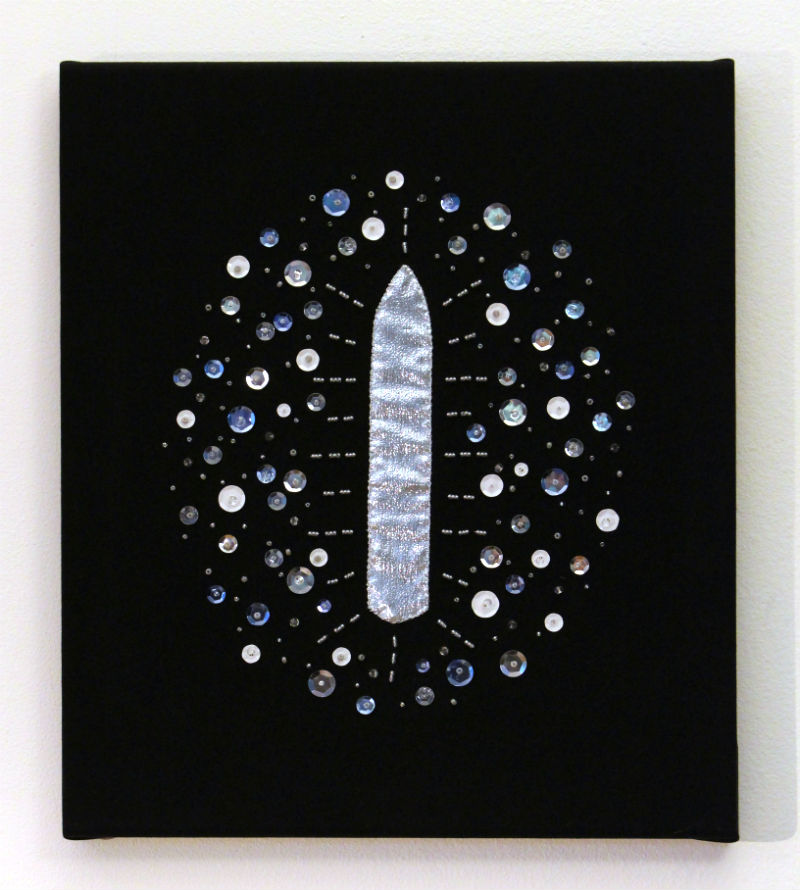
It may initially seem surprising that winter can inspire artists. One would think the nippy climate would discourage creativity.
Yet it’s also fair to say that an austere contemplation can foster art during this most challenging time of the year. Given the ambiance, temperature, and the chilly weather conditions, it’s little wonder that mediation would be a key factor for many artists so inclined.
As the Kerrytown Concert House’s Winter Meditation exhibition shows us, three local artists -- textile artist Kirsten Lund and husband-wife photographers Ann and Fred Ringia -- have in particular found inspiration in this most meditative of seasons.
Dennis Jones’ “Candyland” is a graffiti-inspired exploration of post-painterly art
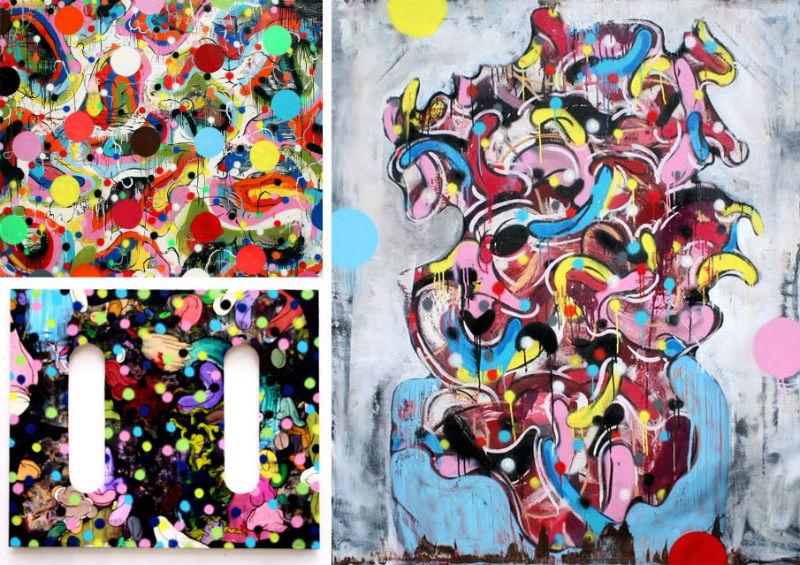
Dennis Jones’ Candyland at the University of Michigan North Campus Research Complex Rotunda is for those who like to have a little contact high to go along with their art.
A 2014-2018 14 masterwork concoction crafted by this adjunct faculty at Detroit’s College for Creative Studies, Candyland is a full-throttled exploration of post-painterly art whose graffiti-inspired abstraction is more than enough to push your glucose level beyond its prescribed limit.
Local Legends: "One-Shot Stanger: The Photos of Eck Stanger" at AADL

Local legend says Egbert ("Eck") Stanger, a 1930s copy editor for The Ann Arbor News, was hired as the paper's first staff photographer because he was the only staffer who knew how to read the German instruction manual for the newspaper's only camera.
As recounted by Arthur P. Gallagher, News editor 1954-1976, in a 1976 article, Stanger supposedly said, "They gave me a second-hand Speed Graphic Camera and a booklet on how to use it."
But why would the Rochester, N.Y.-made Speed Graphic Camera have a German instruction manual?
We're clearly in the realm of John Ford's famed journalistic observation in his 1962 cowboy movie, The Man Who Shot Liberty Valence: "When the legend becomes fact, print the legend."
But Stanger doesn't need any shaky legend to legitimize his incredible body of work, and AADL's One-Shot Stanger exhibition gives us a look at 21 of his finest photos, taken from AADL's Old News collection.
Both Sides Now: “See Through: Windows and Mirrors in Twentieth-Century Photography” at UMMA
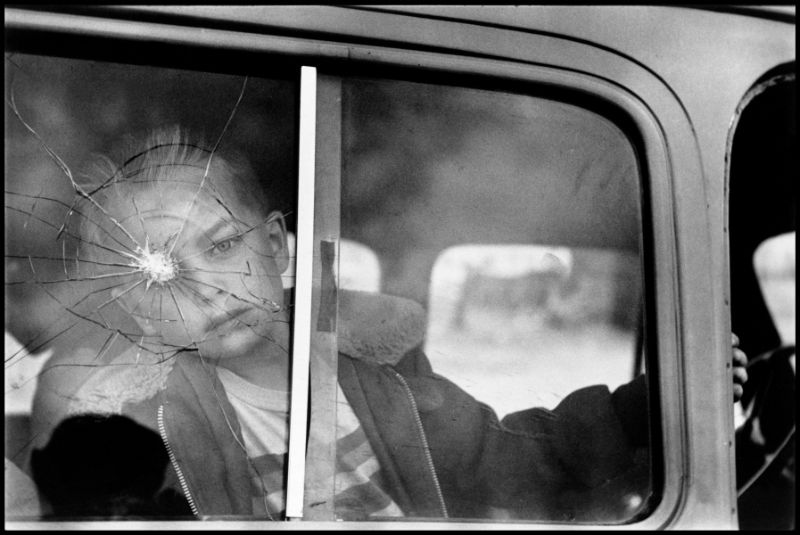
See Through: Windows and Mirrors in Twentieth-Century Photography at the University of Michigan Museum of Art focuses on one of the most thought-provoking conundrums of art photography.
Curated by Jennifer Friess, the exhibit pivots on her observation that there’s a disjunct between “the choices photographers make when constructing their images and, in turn, the manner in which we -- as active viewers -- see [their] photographs.”
Drawing from one of the preeminent collections of photography in the country, Friess has crafted one of the most provocative exhibits of art photography to be mounted at the museum in this last quarter-century.
Patterns in the Process: “Sara Adlerstein: Ecologies, my true colors” at WSG Gallery

Vivid, biomorphic expressions take imaginative turns in Sara Adlerstein’s Ecologies, my true colors at downtown Ann Arbor’s WSG Gallery.
Adlerstein’s mixed-media Ecologies exhibit features biologically themed art crafted largely in dramatic three by four feet proportions. Her all-heart artworks are abstractions based on realism featuring nuanced, organic leitmotifs.
An applied aquatic ecologist and current faculty member at the University of Michigan School of Natural Resources and Environment, Adlerstein hasn’t pursued formal training in the arts. Rather, she says she’s has been painting for as long as she’s been a scientist. “Art and science belong together as naturally as air and water,” Adlerstein wrote in her artist's statement
Minimalesque: “Deborah Campbell and Lois Kane: Burgeoning” at Kerrytown Concert House
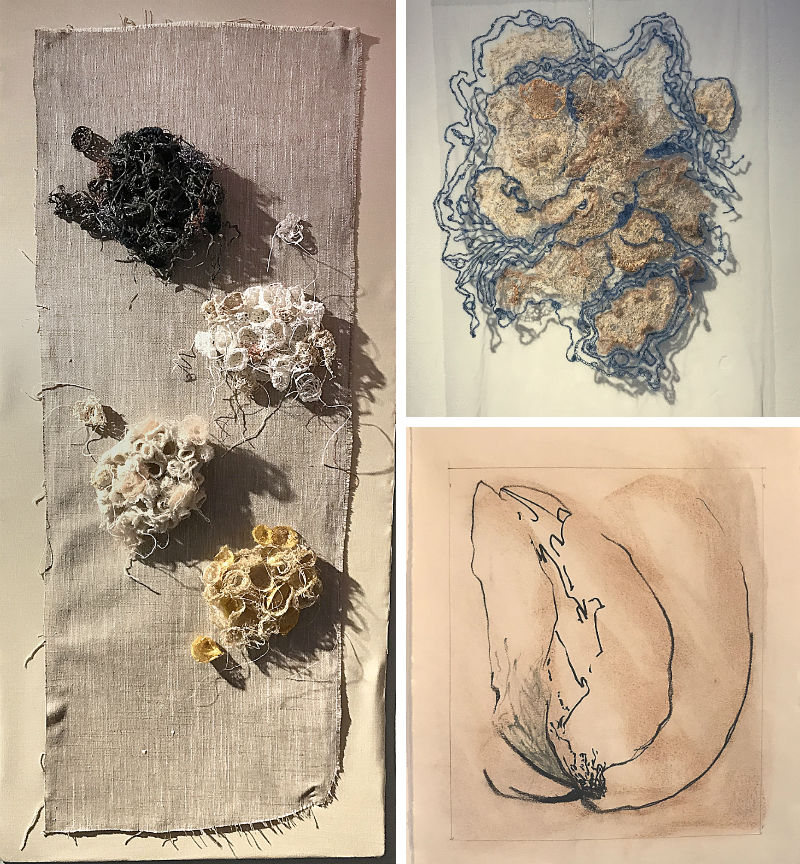
There’s minimalist art and there’s art on the edge of being minimal. This distinction may seem paradoxical, but it is one way of describing the Burgeoning exhibit at Kerrytown Concert House by local artists Deborah Campbell and Lois Kane.
Deborah Campbell's art is minimal -- and it's bountiful for it. Where a less talented artist might overpower her work with excess, Campbell strategically stitches her fiber art with just enough effort to convey her articulation. Every stitch counts.
Lois Kane's draftsmanship functions in a similar fashion as Campbell's stitching. Where Campbell’s touch is serene, Kane’s line is vigorous, or memorably spare, and is always on point.
Causing Moments: WSG Gallery's “Lynda Cole: Recent Places and Themes”

Local artist Lynda Cole is back at the WSG Gallery with another adventure in abstraction that’s as much about her sense of self as it is an exploration of art itself.
The last time we saw her work was in November 2015 when she held North to be as much a state of mind as it is a navigational direction. As I wrote at that time, Cole’s North exhibition was a “fusing of time and space -- through a particular state of mind.”
Her Recent Places and Themes is more of the same. As Cole says in her gallery statement, “Months ago, when I began working on paintings for this show, I was exploring the simple way in which two colors would interact.”
Lyrical Lines: “Matisse Drawings: Curated by Ellsworth Kelly" at UMMA
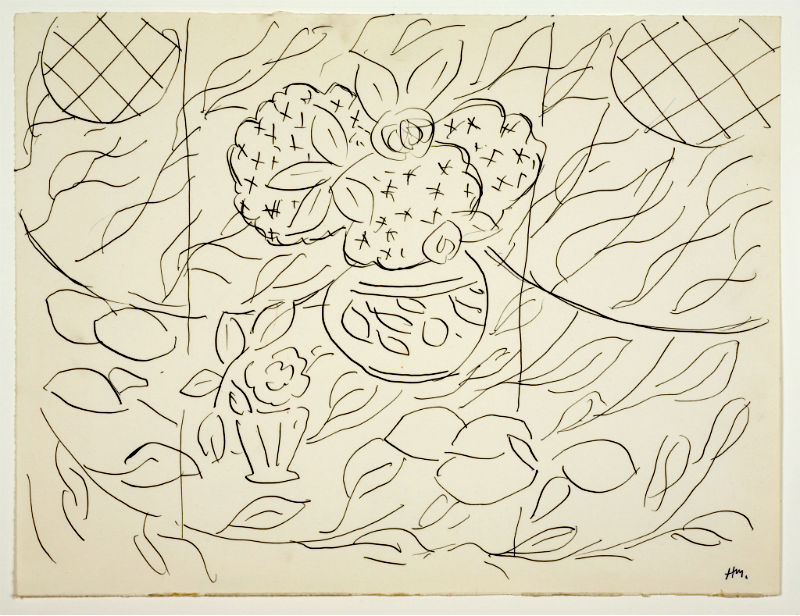
Matisse Drawings: Curated by Ellsworth Kelly at the University of Michigan Museum of Art’s spacious second-story A. Alfred Taubman Gallery is proof that less is more when it comes to art.
Principally managed by the UMMA’s Assistant Curator for Western Art, Lehti Mairike Keelmann -- herself working from the late-Ellsworth Kelly’s instructions -- this exhibit of 45 Matisse drawings (with an additional nine Kelly lithographs) from the Pierre and Tana Matisse Foundation Collection cuts an artful swath across this French master’s career.
“This exhibit reflects the imaginative artistic rapport of two celebrated artists through lyrical line and efficiency of gesture," Keelmann said in a recent interview. "But how they get to the place where they intersect is the subtle underpinning of this deceptively complex exhibition.”
Look Deep: John Lilley's “Wandering Around … in black and white” at Kerrytown Concert House
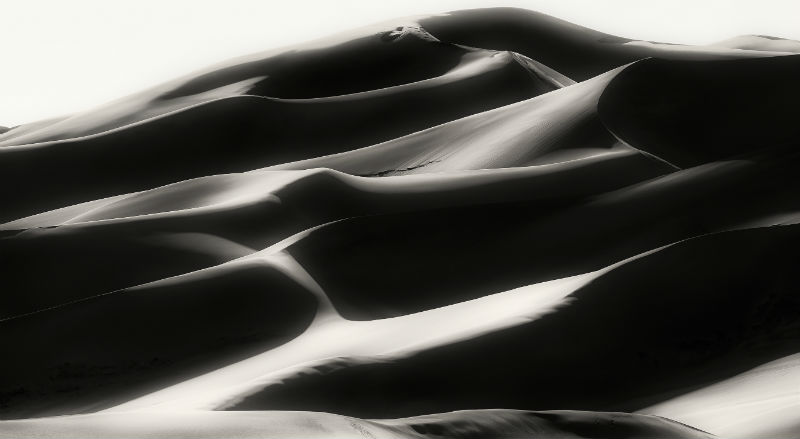
We last saw John Lilley’s photography at the Kerrytown Concert House in June 2012. His John Lilley Photographs exhibition found the Dexter photographer using digital color notable for its exhilarating chromaticity as well as its remarkable penchant for detail.
“Simply put,” said Lilley at that time, “I make photographs because I see photographs.”
But as he later tellingly added in that statement, “I’m rarely attracted to the 'big picture.' Rather, my vision is almost unconsciously drawn to distinct designs, textures, and forms that occur as small subsets of the broader landscape. I’m fascinated by the myriad possibilities for abstract composition that exist in our world.”
All of which is to say that Lilley’s current Wandering Around … in black and white shows us that his monochromatic photography is easily the equal of his color work. Indeed, if anything, Lilley’s photographic self-discipline is as much (if not more) vivid than his color art.
The work in this exhibit dates back to the 1970s, from using old-school analog photographic technology right up through contemporary digital work recently executed. None of the photos are dated, which creates a chronological ambiguity that forces the viewer to focus on the art rather than try to trace Lilley’s artful development. This strategy effectively makes each work an equal among equals.
As he says in his most recent gallery statement:
The American Road Trip is, for me, the activity of simply wandering from place to place. I’m not sure if the road trip is an excuse for photography, or if photography is my excuse for the road trip. Whichever it is, the traveling about is an opportunity to see what’s out there, to discover new places and the things that inhabit those places and spaces. When I’m on the road with my cameras I’m totally focused on the undivided landscape. I try to see into that landscape as deeply as I can.
Right said: What’s best about this self-description is that this “seeing” is precisely what Lilley does best. And how he sees -- as much as what he sees -- is what makes his exhibition a superior display of art.
This may be because black and white images tend to appear ageless. There’s often a subtle chiaroscuro tincture that ironically reveals more nuance than the color we would normally see around us. This monochromic shading makes it difficult to date the work because of the composition’s play of light and shadow.
As such, black and white photography is often more dramatic than color photography because of this psychological remove. There’s a nebulous gravity running through the photographs in Wandering Around in Black and White that contrast heartily to the vibrant color patterns of Lilley’s color photos.
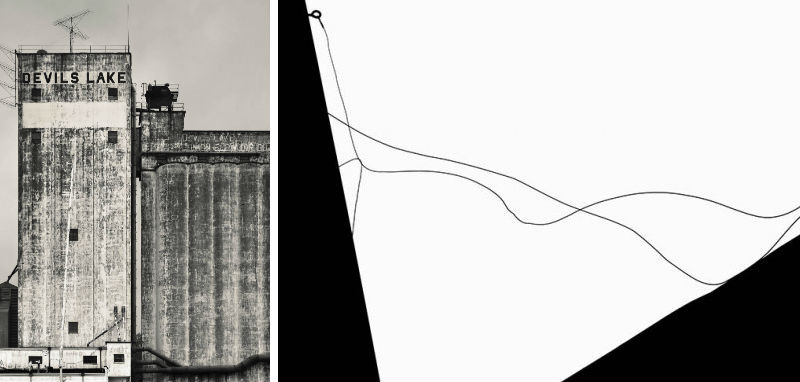
Likewise, it’s interesting that one of the more stunning works in the 25 photographs on display is magnificently large-scale if there ever was a “large-scale.” Because for someone who says he’s not looking for the “big picture,” Lilley’s Devils Lake, North Dakota sure looks big enough.
Photographing an aged building next to a silo, Lilley’s Devils Lake is simultaneously a big picture and nuanced study. Shrewdly referencing a touch of early 20th century American Precisionism, the aged architectural structures in the photograph have a gritty integrity that can’t be missed. Lilley expertly captures these structures rectilinear façade with its complex horizontal and diagonal gradation to illustrate each striated scuff that marks its history.
On the other hand, Lilley statement implicitly references “road trips” and other such places --
and what could be more other than landscape photography? His Sand Dunes, Early Morning: Great Sand Dunes NP, Colorado certainly fits this bill. A striking crosswise depiction of nature in its harsh environment, his depiction of this national park is surprisingly serene for such a terrain.
The vista is grandly impressive -- and there can be no denying this fact -- yet Lilley’s judgment softens the environment’s austerity through the adroit manipulation of light and shadow. Really no more than a series of receding sand dunes whose alternation of light and dark creates an internal harmony of visual alliteration, Sand Dunes, Early Morning's interspersed rhythmic contemplation carries the viewer’s eye well beyond the desert horizon.
Yet perhaps the hardest trick for any art photographer using black and white is to craft silhouettes of such a sharp disparity that the precise tonal juxtaposition supplies the entire information one needs to take the measure of the composition. Lilley’s Wires: Concordia, Kansas is easily the masterwork in the exhibit for this reason.
Wires features a black and white contrast that’s startlingly pure in its monochrome articulation. As inspired as it is spare, two supporting triangles (of whatever origin) suspend a tangle of irregularly coiled curvilinear wire through an eye hook bolt in what amounts to a compositional limbo. Lilley dispenses with any semblance of depth in favor of a paradoxical black and white curvilinear and rectilinear abstraction whose precise difference lets the work’s geometric elements hover on the photograph’s foreground. It’s a satisfying inner tension that allows his viewer’s eye to wander as restlessly as does his camera.
John Carlos Cantú has written on our community's visual arts in a number of different periodicals.
John Lilley's “Wandering Around … in black and white” runs through Dec. 3 at Kerrytown Concert House, 415 N. 4th Ave, Ann Arbor. The exhibit is available 9:30 am-5 pm, Monday-Friday, during public concerts, and by appointment. For information, call 734-769-2999 or visit kerrytownconcerthouse.com.
Photographer Nina Hauser dreams of India in her new WSG Gallery show
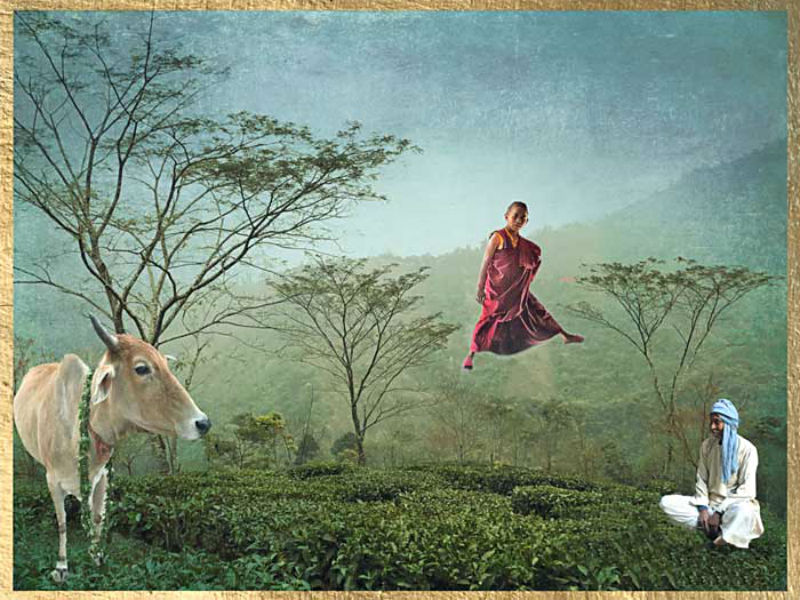
The last time we saw Nina Hauser’s iPhone photography at the WSG Gallery was in May 2013. I was keenly struck at that time how her display illustrated the fundamental principle that the human element cannot be taken out of art irrespective of the technology used to make the work. The 22 photographs in that exhibit were marked by a remarkable technique and skill -- with both artful elements reflecting the “eye” implicit in the photographic image.
Hauser’s current exhibit at that same gallery, The Real World Is Not the Only World -- India Dreams, finds this local photographer immersed in her fascination with the culture of the Asian subcontinent -- and certainly sufficiently enough as to revolutionize her aesthetic.


































